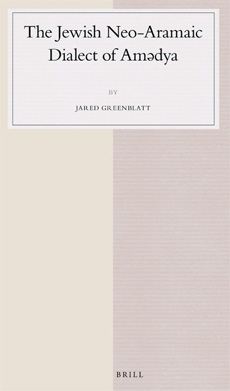|
INTRODUCTION
The loss of a language represents...an irreparable loss for us all, the loss of opportunities to glimpse alternative ways of making sense of the human experience. (Mithun 1999: 2)
History and Dialectal Classification
The use of the blanket term “Neo-Aramaic” in itself, as well as the commonly accepted convention of writing about its so-called “dialects”, may give the uninitiated reader the misguided impression that “Neo-Aramaic” is one, homogenous language. In fact, the name is used to refer to all those modern tongues which can be shown to have their origins in the Aramaic language of old.1 In actual fact, the major “dialects” of Neo-Aramaic are quite often mutually unintelligible, evenin cases of relative geographical proximity.
By the standards of the world’s languages, the degree of variety within Neo-Aramaic is unexpected for such a small language area. This state of affairs is at least partially explained by the fact that the once contiguous language area of the Aramaic language was carved up into numerous non-contiguous enclaves, which then underwent a sustained period of separate development. A brief consideration of the historical circumstances which led to this is perhaps appropriate at this point.
Documents written in the Aramaic language are attested almost continuously from as early as the 9th century BCE. Aramaic, or rather, a relatively homogenised form known as “Imperial Aramaic”, eventually became the official lingua franca of the Babylonian and the Achaemenid Persian empires (c. 700–300 B.C.E) and gradually superseded Akkadian as well as the other native languages of the countries which constituted the Persian empires. Even prior to the onset of the Christian era, there already existed a number of discernible varieties ...
1 On the other hand, the terminology is perhaps best viewed as an attempt at pragmatism, and there is much to be said for the sacrifice of a proportion of positivism on the altar of brevity, clarity and comprehensibility. Of course, scholars do not always imply that Neo-Aramaic is just one language. For example, Otto Jastrow’s 1997 article in The Semitic Languages is entitled “The Neo-Aramaic Languages”.
Acknowledgments
This monograph is based on fieldwork carried out during my time reading for a doctorate at the University of Cambridge. Thanks are due to the Arts and Humanities Council for the Doctoral Award (2004-2007) which funded this. I would like to extend my heartfelt gratitude to my supervisor, Professor Geoffrey Khan, for his tireless assistance during the course of my doctoral studies, and especially over the final few months, during which his considered and, above all, calm advice was more of a help to me than he can know. Few doctoral students have the good fortune to be supervised by a scholar of the academic calibre of Professor Khan. More importantly, however, he is a mentsch.
Thank you to all my informants, for their willingness to co-operate with the often burdensome fieldwork tasks and also to have me try every one of their traditional dishes.
My gratitude is also due, in no small measure, to Dr Hezy Mutzafi, without whom my initial forays into the world of Israeli Neo-Aramaic speakers would surely have been fruitless. His advice and suggestions throughout my time doing fieldwork in Israel and thereafter were invaluable.
Thanks to my wife, Sarah Hindy, for her steadfast support. Thanks are also due to my mother and my sister for all their support (and proofreading) and to the man who did most to encourage me to pursue this work, my late father.
| 